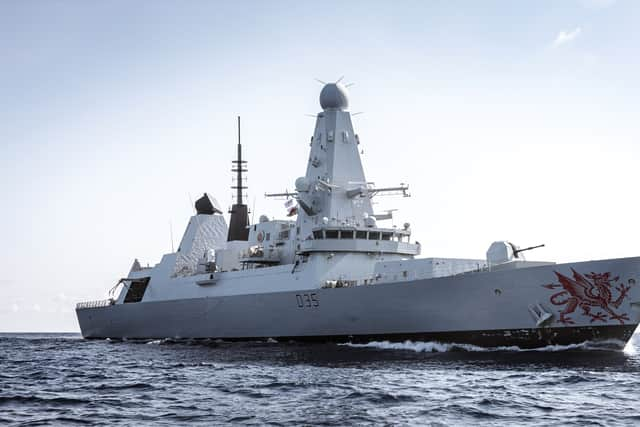Royal Navy: HMS Dragon nearing a return to water after two years of upgrade work
and live on Freeview channel 276
The type 45 destroyer, HMS Dragon, has been undergoing major upgrades in Portsmouth's dockyard since March 2022, which included the installation of three new engines. The expectation is that the ship will be able to re-join the fleet in 2024 as the engines have now been turned on for the first time in testing.
The milestone has been hailed by the Dragon's Senior Naval Officer, Lieutenant Commander Fiona Stephenson, who said: "The inaugural roar of Dragon’s new engines marked the beginning of the next chapter in our return to the fleet. I am proud of the hard work of our marine engineering team and industry partners and look forward to delivering as one team as we breathe fire into Dragon.”
Advertisement
Hide AdAdvertisement
Hide AdThe ship is the third to go through the Power Improvement Project (PIP), following HMS Daring and HMS Dauntless, which addresses the resilience of the engines and power generation driving the many systems, sensors and weapons onboard. The Dragon is the only one where the improvement works have been conducted in Portsmouth under BAE systems.


Marine Engineering Officer Lieutenant Commander James Baddeley added: “It is really exciting to see the PIP installation coming to life to increase the capability of the platform, the successful first start is testament to all the hard work which has gone into the design and installation onboard.” Further testing of the engines will take place in Portsmouth in a non-tidal basin before it can then hit the water.
Comment Guidelines
National World encourages reader discussion on our stories. User feedback, insights and back-and-forth exchanges add a rich layer of context to reporting. Please review our Community Guidelines before commenting.